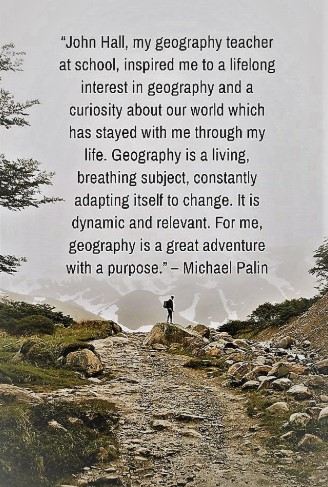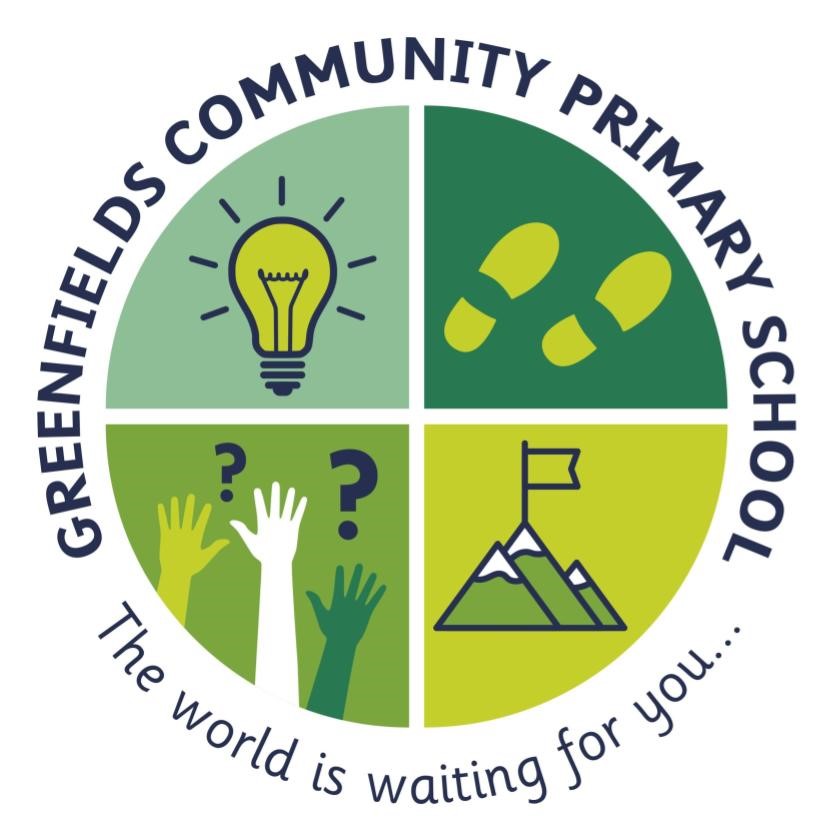Geography

Leader: Mr Lumsdon
INTENT
Our Geography curriculum is designed to:
- Increase children’s knowledge and understanding of their own locality, the E.U. and contrasting localities in the wider world, which will help them set local, national and international events within a global context.
- Develop an awareness and understanding of features, physical processes and change in their immediate environment and other localities which they study.
- Enable children to understand and compare the physical and human characteristics and processes e.g. weather, settlement, transport and employment in different localities.
- Enable children to appreciate and compare the environment and to understand how and why people seek to manage and sustain environments and to identify ways in which damage can be repaired.
- Develop the skills, knowledge and understanding necessary to identify and investigate important cultural, social and environmental issues with sensitivity to people’s attitudes and values.
- Help children to develop an understanding of the nature of multi-cultural and multi-ethical societies and a sensitivity to cultural and racial prejudice and injustice.
- Develop competency in using maps, atlases, photographs, fieldwork techniques and to develop skills appropriate to geographical enquiry e.g. the ability to observe, analyse and communicate, to gather and interpret information and use ICT to support their learning where appropriate.
IMPLEMENTATION
The objectives of geography teaching in our school are based on the requirements of the National Curriculum programmes of study for EYFS, Key Stage 1 and Key Stage 2. We follow the aims of the Early Learning Goals for our EYFS curriculum, and we have followed advice from the Geographical Association when creating our KS1 and KS2 curriculum. Each topic has been designed specifically to fit with our school's vision, values and local context.
In terms of our EYFS geography curriculum, we focus on the section of the ELG that is ‘Understanding the World,’ :

We use these objectives to inform the activities we deliver and offer to our EYFS children.
Our curriculum is split into key strands, based on the wording of the NC, that form the foundations of our planning:

You will find these in the planning documents, to demonstrate to teachers which subject specific skills are applicable for each lesson. You will also find them as a sticker at the beginning of each lesson, so that children can recognise which skills they are using and become more fluent in understanding each.
Pupils should develop knowledge about the world, the United Kingdom and their locality.
They should understand basic subject-specific vocabulary relating to human and physical geography and begin to use geographical skills, including first-hand observation, to enhance their locational awareness.
Pupils should be taught to:
Locational knowledge
~Name and locate the world’s seven continents and five oceans
~Name, locate and identify characteristics of the four countries and capital cities of the United Kingdom and its surrounding seas
Place knowledge
~Understand geographical similarities and differences through studying the human and physical geography of a small area of the United Kingdom, and of a small area in a contrasting non-European country
Human and physical geography
~Identify seasonal and daily weather patterns in the United Kingdom and the location of hot and cold areas of the world in relation to the Equator and the North and South Poles
~Use basic geographical vocabulary to refer to:
~Key physical features, including: beach, cliff, coast, forest, hill, mountain, sea, ocean, river, soil, valley, vegetation, season and weather
~Key human features, including: city, town, village, factory, farm, house, office, port, harbour and shop
Geographical skills and fieldwork
~Use world maps, atlases and globes to identify the United Kingdom and its countries, as well as the countries, continents and oceans studied at this key stage
~Use simple compass directions (North, South, East and West) and locational and directional language [for example, near and far; left and right], to describe the location of features and routes on a map
Based on the statutory requirements of the National Curriculum, our KS1 topics are:
Year 1
Autumn 2/Spring 1 – A local study of familiar environments
If you had the freedom to choose where you live; would you pick the city, the countryside or the beach?
Spring 2 – Geographical skills and fieldwork
Year 2
Autumn 2/Spring 1 – A comparative study of a country outside of Europe, compared with the UK.
What can we change to protect Australia?
Spring 2 – Geographical skills and fieldwork
In KS2, pupils should extend their knowledge and understanding beyond the local area to include the United Kingdom and Europe, North and South America. This will include the location and characteristics of a range of the world’s most significant human and physical features. They should develop their use of geographical knowledge, understanding and skills to enhance their locational and place knowledge.
Pupils should be taught to:
Locational knowledge
~Locate the world’s countries, using maps to focus on Europe (including the location of Russia) and North and South America, concentrating on their environmental regions, key physical and human characteristics, countries, and major cities
~Name and locate counties and cities of the United Kingdom, geographical regions and their identifying human and physical characteristics, key topographical features (including hills, mountains, coasts and rivers), and land-use patterns; and understand how some of these aspects have changed over time
~Identify the position and significance of latitude, longitude, Equator, Northern Hemisphere, Southern Hemisphere, the Tropics of Cancer and Capricorn, Arctic and Antarctic Circle, the Prime/Greenwich Meridian and time zones (including day and night)
Place knowledge
~Understand geographical similarities and differences through the study of human and physical geography of a region of the United Kingdom, a region in a European country, and a region within North or South America
Human and physical geography
~Describe and understand key aspects of:
~Physical geography, including: climate zones, biomes and vegetation belts, rivers, mountains, volcanoes and earthquakes, and the water cycle
~Human geography, including: types of settlement and land use, economic activity including trade links, and the distribution of natural resources including energy, food, minerals and water
Geographical skills and fieldwork
~Use maps, atlases, globes and digital/computer mapping to locate countries and describe features studied
~Use the eight points of a compass, four and six-figure grid references, symbols and key (including the use of Ordnance Survey maps) to build their knowledge of the United Kingdom and the wider world
~Use fieldwork to observe, measure, record and present the human and physical features in the local area using a range of methods, including sketch maps, plans and graphs, and digital technology.
Based on the statutory requirements of the National Curriculum, our KS2 topics are:
Year 3
utumn 2/Spring 1 – A study of rivers and their benefits.
What kind of reforms could we make to live safely next to a river?
Spring 2 – Geographical skills and fieldwork
Year 4
Autumn 2/Spring 1 – A study of volcanoes and earthquakes.
Is there wisdom behind the decision to live next to a volcano?
Spring 2 – Geographical skills and fieldwork
Year 5
Autumn 2/Spring 1 – A study of the Amazon rainforest and the human impact.
Is it too late for humans to show morality towards the Amazon Rainforest?
Spring 2 – Geographical skills and fieldwork
Year 6
Autumn 2/Spring 1 – A comparative study of the UK, USA and China
What is the truth behind becoming a world superpower?
Spring 2 – Geographical skills and fieldwork
ASSESSMENT
We assess the children’s work in geography through ongoing teacher assessment. This allows us to identify any pupils requiring support in specific lessons and those children who hold a deeper understanding so that we can adjust our lessons accordingly.
Once the children have completed a unit of work, we have created a summative assessment for each topic to gauge how much the children have retained. This consists of 6 questions that involve recalling key learning throughout the topic as well as a final interpretation question to offer an opportunity for pupils to demonstrate a greater depth of understanding.
For example:

To ensure that content is remembered long term and can support learning in new topics, we use curriculum revisit activities to ensure that learning is remembered and re-used. Especially when it comes to abstract themes across the geography curriculum.
For example:

MEETING THE NEEDS OF ALL LEARNERS:
We aim to encourage all children to reach their full potential through the provision of varied opportunities. All children should have equal access to the geography curriculum through appropriately selected activities. We recognise that our curriculum planning must allow children to gain a progressively deeper understanding and competency as they move through school. If we feel a pupil has a learning need or English acts as a barrier for them to make progress in geography, we give them the opportunity to verbalise their answer to a question and we record that via Seesaw, placing a QR code in their book. For example:

Where appropriate, we also utilise our membership to Mozaik3D. This allows us to bring abstract concepts and learning to life:
https://www.mozaweb.com/en/Extra-3D_scenes-Terms_of_physical_geography-139713
We have also incorporated the LYFTA platform into our weekly assemblies. This is an interactive resource which allows the children to visit different locations and countries around the world and find out about the lives of people that live and work there.
